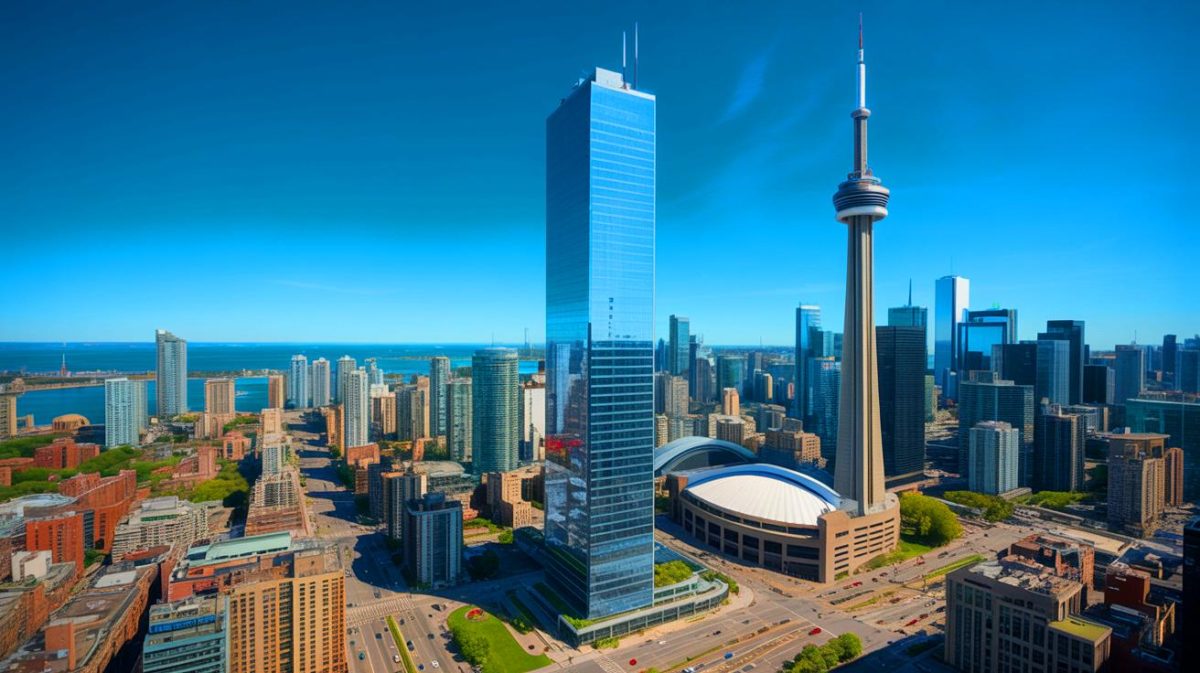| IN A NUTSHELL |
|
Toronto is on the brink of setting new architectural records as the city prepares to unveil its latest addition to the skyline: the SkyTower. This 106-story marvel, part of Pinnacle International’s One Yonge complex, is poised to become the tallest building in Canada, surpassing the current record-holder, First Canadian Place. Located at the foot of Yonge Street, the SkyTower is not only a feat of engineering but also a symbol of Toronto’s continuing urban transformation. As construction progresses, the tower is already reshaping the cityscape and sparking discussions about urban development and architectural ambition.
The Ambitious Vision Behind SkyTower
The journey to create the SkyTower began in 2012 when Vancouver-based developer Pinnacle International acquired the former Toronto Star headquarters at 1 Yonge Street. The acquisition marked the start of a bold redevelopment plan that would transform the site into a multi-phase project known as One Yonge. The first phase, a 65-story tower named The Prestige, was completed between 2018 and 2023, setting the stage for the construction of the SkyTower.
Initially proposed as a 95-story building, the SkyTower’s design evolved over time to its current 106-story blueprint. This adjustment reflects Pinnacle’s ambition to redefine Toronto’s skyline and establish a new architectural benchmark. The project’s scale and complexity required meticulous planning and significant investment, underscoring the developer’s commitment to shaping the future of urban living in Toronto.
Redefining Toronto’s Skyline
As the SkyTower rises above the city, it is set to eclipse the height of First Canadian Place, which has held the title of Canada’s tallest building for decades. Standing at over 1,132 feet, the SkyTower will not only surpass this landmark but also exceed the height of the One Bloor West complex, which is currently under construction to the north. This record-breaking feat emphasizes the competitive nature of urban development in Toronto, where developers are constantly pushing boundaries.
The tower’s completion will position its crown at a height comparable to the CN Tower’s main observation pod, making it a prominent focal point in the city’s skyline. Its strategic location along the waterfront enhances its visibility, ensuring that the SkyTower will become an iconic addition to Toronto’s architectural landscape.
Balancing Residential and Commercial Spaces
The SkyTower’s design incorporates a mix of residential and commercial spaces, with the majority of its floor area dedicated to condominiums. This approach aligns with current trends in urban development, where mixed-use buildings are increasingly popular. The inclusion of Marriott International’s Le Meridien hotel at the tower’s base marks a significant milestone, as it represents the brand’s return to Canada after more than 30 years.
The hotel is slated to open in fall 2025, though the timeline is ambitious given the ongoing construction. However, there is precedent for businesses operating in the lower levels of high-rise developments while construction continues above, as seen with the Aura at College Park. This strategy allows for phased occupancy and can help mitigate delays in project completion.
Implications for Toronto’s Urban Landscape
The SkyTower’s construction is more than just an architectural achievement; it reflects broader trends in urbanization and economic growth. The tower’s dominance over its surroundings illustrates the rapid pace of development in Toronto, a city that continues to attract investment and population growth. As the former Toronto Star building is set for demolition, the SkyTower symbolizes the city’s evolution and the ongoing demand for high-density living spaces.
As Toronto embraces vertical expansion, questions arise about the impact on infrastructure, transportation, and community dynamics. The SkyTower’s completion will surely influence future development projects, setting new standards for design and construction. This ongoing transformation prompts reflection on how cities can balance growth with sustainability and livability.
As the SkyTower nears completion, Toronto’s skyline is set to change dramatically. This architectural milestone not only marks a new height record but also embodies the city’s aspirations and challenges. As urban centers continue to evolve, how will cities like Toronto adapt to the demands of growing populations while maintaining a high quality of life for their residents?
Did you like it? 4.4/5 (20)








Wow, 106 stories? That’s one tall building! 🏢
Do we really need another skyscraper in Toronto?
Sounds impressive, but what about the environmental impact?
Can’t wait to see how the skyline will look with the SkyTower! 😊
Picture doesn’t make sense
Hope they have enough elevators for all those floors! 😅
Will the SkyTower have a public observation deck?
Toronto is becoming the new New York with all these skyscrapers!
Is this the right direction for urban development?
Can’t believe it’s going to be taller than the CN Tower’s pod!
Finally, Le Meridien returns to Canada! 🎉
Are there any affordable housing units in the SkyTower?
This photo is fake nonsense
Nice picture!